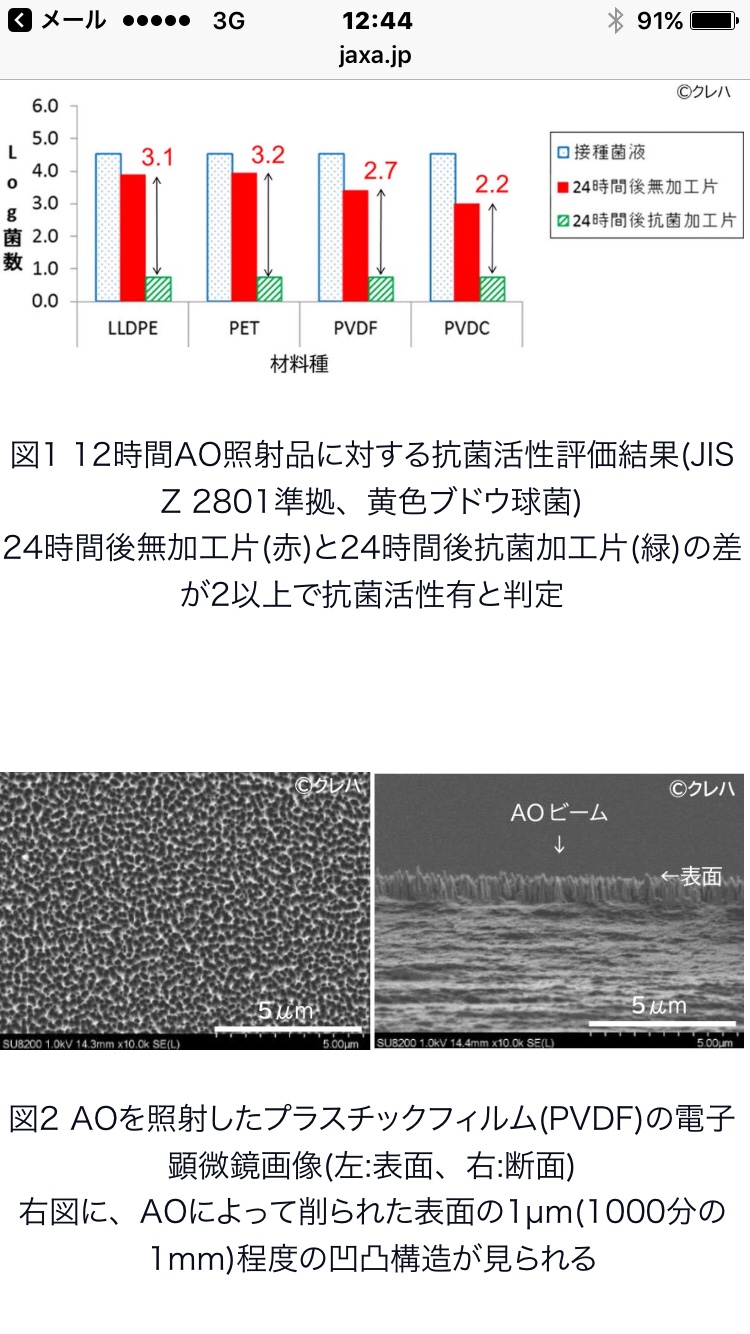
JAXA: Irradiation of plastic with atomic oxygen: Antibacterial performance
“Kureha” / “JAXA”
Plastic materials: antibacterial performance
Kureha and JAXA irradiate the surface of plastic materials with atomic oxygen (Note 1).
As a result of the irradiation, we discovered that “the plastic material surface has a minute shape change (unevenness), and antibacterial performance is exhibited”.
Research background: Atomic oxygen effects
Atomic oxygen is abundant in orbit at an altitude of several hundred km (ISS / satellite flight).
The surface of plastic materials used in rockets is cut off by colliding with atomic oxygen.
This is recognized as “the cause of deterioration of plastic material performance”.
JAXA:
For many years, we have been studying the effects of atomic oxygen on spacecraft materials.
Kureha:
We are conducting business with resin material development / resin processed products.
Especially in the field of high-performance films, it is well-known for the development of “film products with barrier properties that do not allow gas (water vapor and oxygen) to pass through”.
Collaborative research: antibacterial activity / experimental results
An evaluation test based on JIS Z 2801 was performed on the plastic surface irradiated with atomic oxygen.
As a result, it was confirmed that “antibacterial activity against Escherichia coli and Staphylococcus aureus was expressed” in multiple samples (Fig. 1).
Observe the surface cut by atomic oxygen with an electron microscope.
It can be seen that “an uneven structure of about 1 µm (1/1000 mm) is formed” (Fig. 2).